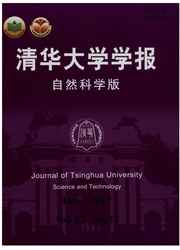

 中文摘要:
中文摘要:
利用SEBAL(surfaceenergybalancealgorithmforland)模型反演了黄河流域河龙区间蒸散发,研究了模型对输入参量的敏感性。结果表明:SEBAL模型显热通量反演值对地表温度、冷热点性质(热点地表温度、热点净辐射等)较为敏感,对地气温差、地表发射率、反照率有一定敏感性,而对气象数据(风速、气温、水汽压)、动量粗糙长度、归一化植被指数不敏感。结合参量误差来源及其变异性分析认为,影响SEBAL模型反演结果最大的是冷热点性质和地表温度。相对于热点温度偏高和冷点温度偏低,热点温度偏低和冷点温度偏高对SEBAL模型反演结果影响更大。因此,正确选取研究区内冷热点并采取合理的控制方法,是保证SE—BAL模型反演蒸散发精度的重要前提。
 英文摘要:
英文摘要:
The sensitivity of the SEBAL (surface energy balance algorithm for land) model to the input parameters was analyzed by inverting ET (evapotranspiration) in the Hekou Longmen Section of the middle Yellow River. The SEBAL output is more sensitive to land surface temperature, the properties of hot and cold pixels (such as temperature and net radiation), is moderate sensitive to surface and air temperature differences, surface emissivity and surface albedo, and is less lower sensitive to meteorological data (such as wind speed, air temperature and vapor pressure), NDVI and the roughness length for momentum transfer. The error sources and the actual variability of the input data show that the properties of the hot and cold pixels and the land surface temperature have the most impact on the results. Comparing higher hot pixel temperatures and lower cold pixel temperatures, the lower hot pixel and the higher cold pixel temperatures more significantly impact the simulated H. Therefore, the right representative extreme pixels must be selected with a good quality control method for accurate SEBAL results.
 同期刊论文项目
同期刊论文项目
 同项目期刊论文
同项目期刊论文
 Socio-hydrological water balance for water allocation between human and environmental purposes in ca
Socio-hydrological water balance for water allocation between human and environmental purposes in ca Quantitative assessment of climate and human impacts on surface water resources in a typical semi-ar
Quantitative assessment of climate and human impacts on surface water resources in a typical semi-ar Pollutant Flushing Characterizations of Stormwater Runoff and Their Correlation with Land Use in a R
Pollutant Flushing Characterizations of Stormwater Runoff and Their Correlation with Land Use in a R Seasonal water allocation – dealing with hydrologic variability in the context of water rights syste
Seasonal water allocation – dealing with hydrologic variability in the context of water rights syste Seasonal Water Allocation: Dealing with Hydrologic Variability in the Context of a Water Rights Syst
Seasonal Water Allocation: Dealing with Hydrologic Variability in the Context of a Water Rights Syst The contribution of reduction in evaporative cooling to higher surface air temperatures during droug
The contribution of reduction in evaporative cooling to higher surface air temperatures during droug 期刊信息
期刊信息
